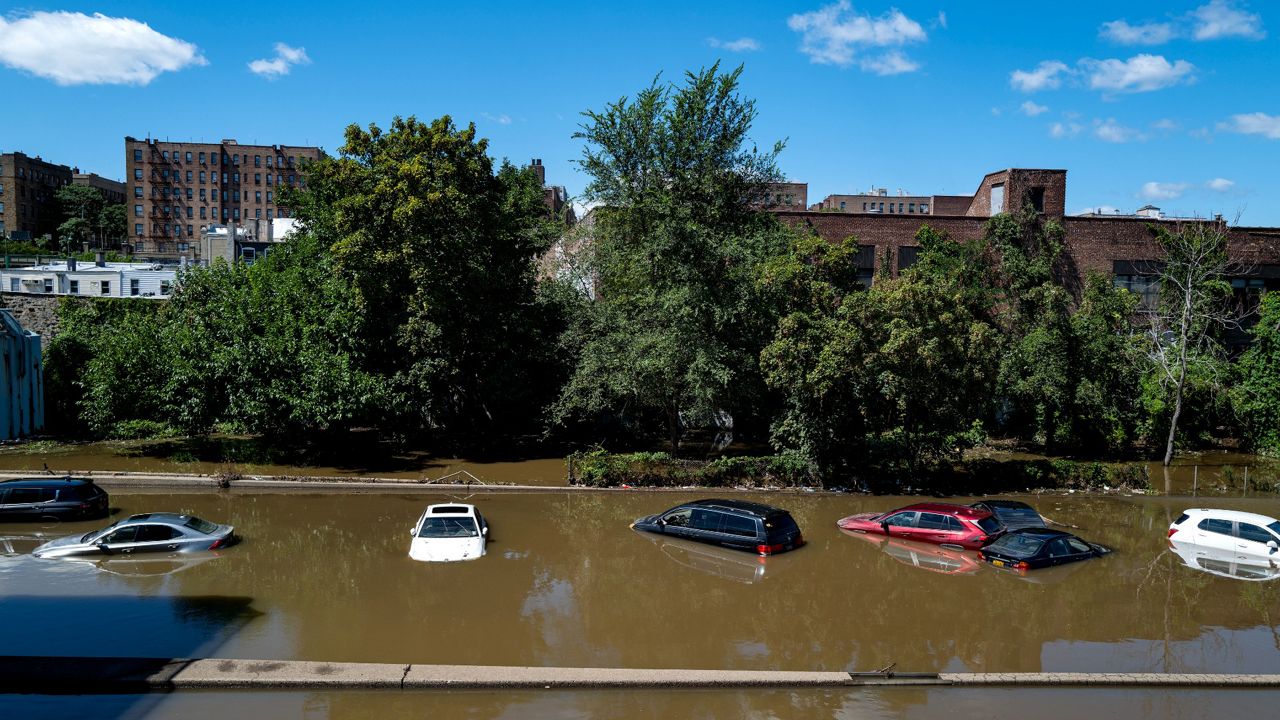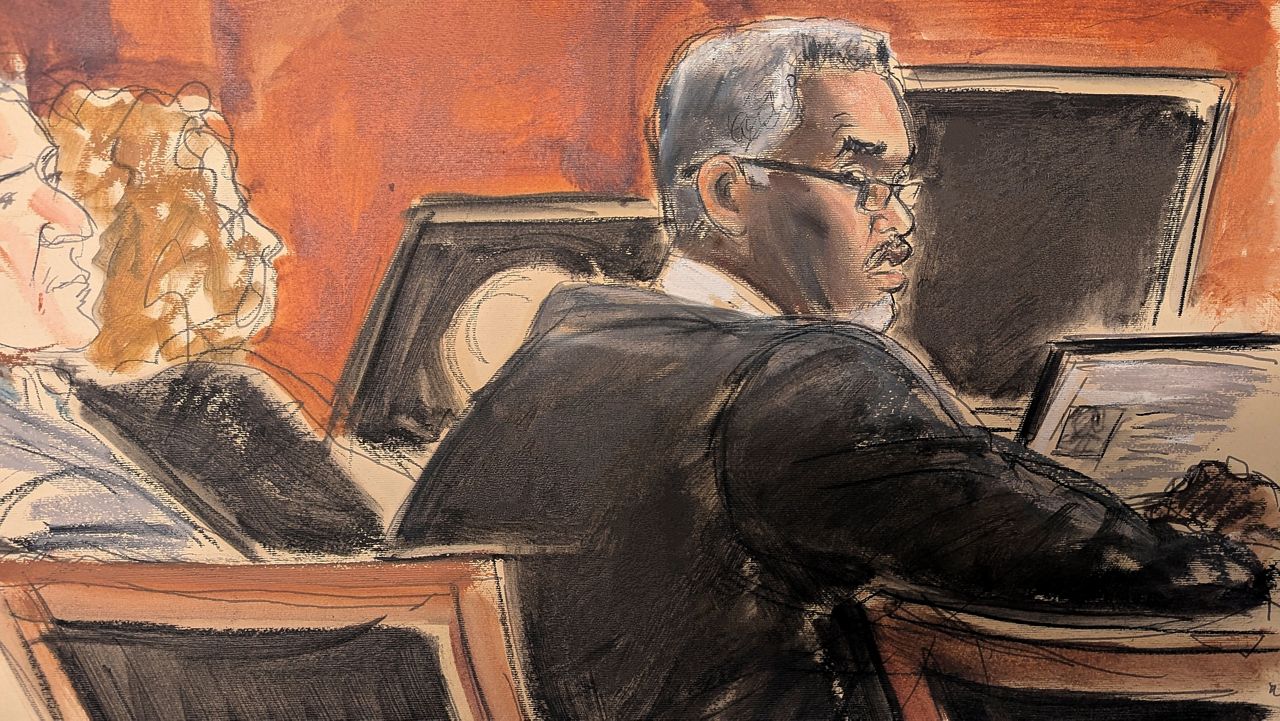The City Council has a “crown jewel” piece of legislation it is ready to pass to help the city adapt urban infrastructure to the new reality of climate change, according to council member Justin Brannan.
The bill, which Brannan and Costa Constantinides introduced in 2019, would create a five-borough resiliency plan, going neighborhood by neighborhood to identify problems and solutions to prevent flooding and mitigate heat.
It would represent perhaps the council’s most significant legislative contribution to infrastructure resilience. Brannan said he hopes to pass it before the end of the year, if not sooner.
It’s not nearly enough.
“Even that is just calling for a study. It doesn't actually do the thing,” Brannan, chair of the committee on resiliency and waterfronts, said in an interview. “We’re so far behind that we don't even have that yet.”
The city has won some key accomplishments in addressing sustainability and fossil fuel use, such as passing a set of 2019 laws that will cap building emissions, committing to an electrified municipal fleet and divesting city pension funds from fossil fuel industries.
Those initiatives have earned the city top marks in national rankings of carbon reduction plans, and spurred both the council and the administration of Mayor Bill de Blasio to declare their efforts the country’s best in addressing climate change.
Yet in the wake of Hurricane Ida, which caused 13 city deaths and hundreds of millions of dollars in damage to subways, businesses and homes, the city is confronting a long to-do list in making the kind of expensive, inconspicuous overhauls and improvements to infrastructure that will help adapt the urban environment to flooding and intense heat that scientists say are already locked in.
“I don't believe there’s one program that makes New York unique on the resilience front,” said Amy Chester, the managing director of Rebuild By Design and who was an aide to former Mayor Michael Bloomberg.
What stands in the way of making those changes, according to officials, politicians, experts and advocates, is aging infrastructure, perennial concerns over costs and limits on the uses of federal dollars. But Chester and other experts are concerned that the city hasn’t laid the groundwork for accepting large amounts of federal aid and putting it to work quickly, by drafting “shovel-ready” plans.
And, as ever, the city has to contend with the inconsistent and shifting focus of elected leaders.
“Overhauling our sewers is not a sexy headline,” Brannan said.
‘The limit of what we can adapt to’
The city insists it has been spending extensively to adapt the urban environment to climate change — about $20 billion in city, state and federal funds since Hurricane Sandy, Jainey Bavishi, the head of the mayor’s resiliency office, said in an oversight hearing last week on the impact of Hurricane Ida.
That money has gone toward large construction projects, like raising East River Park by eight feet to act as a flood barrier for Alphabet City, as well as “green infrastructure” like rain gardens.
The Office of Management and Budget did not respond to a request for a breakdown of city spending on resiliency projects.
The city has also undertaken remediation projects, such as building storm sewer capacity for southeast Queens, which frequently floods even during mild rains. That project has mitigated flood damage in the area, council member I. Daneek Miller, who represents the area, said in the hearing last week.
“We’ve rolled out the most impressive green infrastructure program in the United States,” Department of Environmental Protection Commissioner Vincent Sapienza said in the hearing.
The city has also taken steps to reduce its carbon footprint as part of a goal to be carbon neutral by 2050. Rapidly lowering emissions is essential to any adaptation program, experts say, and current and former administration officials emphasize that the city has done its best to balance emissions reduction and infrastructure investments.
“We ultimately will reach the limit of what we can adapt to if we don't get our emissions under control,” said Daniel Zarrilli, the former chief climate policy adviser to de Blasio, and currently a special adviser on climate and sustainability to Columbia University.
But some experts, as well as City Council members and city agency officials, said recently that the scale and speed of efforts to adapt city infrastructure are not where they need to be.
Some key post-Sandy projects meant to protect against coastal flooding, like the East River Park reconstruction and the Living Breakwaters project in Staten Island, designed to reduce impact and erosion from storm surges, are only getting underway this month.
Sapienza acknowledged last week that green infrastructure now only diverts a small fraction of rainwater from city sewers. City Council member Mark Levine pointed out that, even though the city has 600,000 curbside trees — each a green infrastructure opportunity for rain catchment — there are only 11,000 so-called bioswales completed or under construction on sidewalks that use rain gardens to divert excess water.
“We haven't seen enough willingness to do multiple hard things at once,” said Julie Tighe, the executive director of the New York League of Conservation Voters. “Hopefully we can walk and chew gum at the same time.”
‘The urgency of the moment’
What has stood in the way of broader adaptation efforts, experts and former officials say, is difficulty aligning motives among different levels of government. Politicians are more likely to put their name on a first-of-its-kind park reconstruction project, like in East River Park, than on expanding sewer capacity, Brannan said, and everyone has their own pet project.
Brannan said that the city knows what needs to be done.
“The pace that these projects and plans are moving at do not meet the urgency of the moment,” he said. “That’s really the concern.”
Zarrilli said that the complexity of the problem, as well as budget constraints, have made it difficult at times for the administration and the council to get on the same page.
“The city would love to have more participation from the city council on this, in whatever way they want to participate,” he said.
Council members and administration officials agree that in order to get up to speed, they need money on the scale that only the federal government can provide, especially from legislation currently under consideration in the Capitol. Raising capital funds from the city, such as by increasing water costs to fund sewer updates, is usually a no-go, Sapienza said Tuesday. He estimated, very roughly, the cost of completely overhauling the sewer system at $100 billion.
But Chester, of Rebuild By Design, said she isn’t sure the city has the plans necessary to be ready to accept the infusion de Blasio and other officials have said they are hoping for. Without them, the city will likely take years to complete projects funded by federal dollars from the hoped-for infrastructure bill and from budget reconciliation.
Any major plan for adaptation — such as expanding green areas around the Gowanus Canal — needs extensive community input, experts say, not to mention approval from other city bodies before budgeting and bidding.
And that’s assuming the projects are not subject to legal challenges and other delays, as East River Park has been.
“It’s easier for federal funding and state funding to go to projects that are well defined,” said Cortney Worrall, the president and CEO of the Waterfront Alliance.
That means, for example, going block by block to find scraps of land that can be utilized for rain catchment, and making hard decisions about land use in vulnerable neighborhoods, Worrall said. “The challenge is always going to be that you need real estate, open green space, for that to work best.”
Yet there is already plenty of overlap between adaptation and emissions reduction, according to Annel Hernandez, the associate director of the New York City Environmental Justice Alliance.
The city, the MTA and Con Edison have made investments in the transportation system and in the grid that made it sturdier against extreme weather. There were no widespread power outages during Ida, and the subway was up and running within a day of the floods, Hernandez noted.
What is missing, Hernandez said, is transformative projects for every borough on the level of ongoing efforts to protect the southern tip of Manhattan.
“Unfortunately, I couldn't even point to another major coastal resiliency project in the city,” she said. “Nothing comprehensive, nothing that is following the vision of the local communities.”
If the urgency to identify and begin those projects wasn’t there before, Brannan said, it is now.
“People have definitely found religion after these last storms,” he said. “If this doesn't light a fire under ... government, I don’t know what will.”








